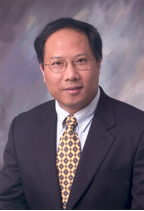Instructor: Dr. Sankaran Mahadevan (John R. Murray Sr. Professor of Engineering Professor of Civil and Environmental Engineering, Professor of Mechanical Engineering Director, NSF-IGERT Doctoral Program in Reliability and Risk Engineering and Management Co-Director, Laboratory for System Integrity and Reliability Vanderbilt University)
Location: Johns Hopkins University, Homewood Campus, Baltimore, MD
About the course: Model-based simulation is attractive for the performance and reliability analysis of structural and material systems under extreme conditions, since full-scale testing is often unaffordable. However, model-based simulation involves many approximations and assumptions, and thus confidence in the simulation result is an important consideration in risk-informed decision-making. Sources of uncertainty are both aleatory and epistemic, stemming from natural variability, information uncertainty, and modeling approximations at multiple levels. Information uncertainty arises from sparse and imprecise data, measurement and data processing errors, and qualitative information. Model uncertainty arises due to unknown model parameters, model form assumptions, and solution approximation errors. This short course will present recent methods for the quantification of uncertainty from multiple sources, and their aggregation towards the behavior prediction of multi-physics, multi-scale systems. Multiple activities such as calibration, verification and validation are conducted as part of the model development at multiple levels, and methods to integrate the results of these activities will be presented. In a multi-scale modeling environment, the information available is heterogeneous, from multiple sources (models, tests, experts) and in multiple formats. The use of Bayesian networks to integrate heterogeneous information will be presented. An important objective of uncertainty quantification is uncertainty reduction. Different analyses and tests at different levels of fidelity could be performed, offering trade-offs between accuracy and cost; thus resource allocation strategies for different uncertainty quantification activities will be outlined, and their effect on uncertainty reduction will be discussed.
About the instructor:

Professor Sankaran Mahadevan
Professor Sankaran Mahadevan has thirty years of research and teaching experience in reliability and risk methods, uncertainty quantification, model validation, structural health monitoring, and design optimization. His research has been extensively funded by NSF, NASA, FAA, DOE, DOD, DOT, NIST, General Motors, Chrysler, Union Pacific, American Railroad Association, and Sandia, Idaho, Los Alamos and Oak Ridge national laboratories. His research contributions are documented in more than 600 publications, including two textbooks on reliability methods and 250 journal papers. He has directed 40 Ph.D. dissertations and 24 M. S. theses, and has taught many industry short courses on uncertainty and reliability analysis methods. His awards include the NASA Next Generation Design Tools award (NASA), the SAE Distinguished Probabilistic Methods Educator Award, and best paper awards in the MORS Journal and the SDM and IMAC conferences. He is currently managing editor of ASCE-ASME Journal of Risk and Uncertainty (Part B: Mechanical Engineering). Professor Mahadevan obtained his B.S. from Indian Institute of Technology, Kanpur, M.S. from Rensselaer Polytechnic Institute, Troy, NY, and Ph.D. from Georgia Institute of Technology, Atlanta, GA.
Registration:




